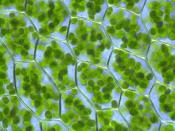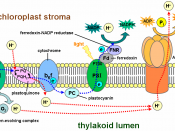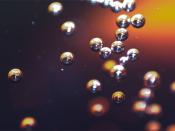Aim: To investigate the effect of different light intensities on the rate of photosynthesis (conventional method)
Introduction: Photosynthesis is the main process by which plants produce food. There are a few conditions required for photosynthesis to take place. They are: Chlorophyll, Light, Carbon Dioxide and Water. Each of these factors has a different effect on the rate of photosynthesis. In plants, the chlorophyll present in the chloroplasts, converts the light energy from the sun and converts it into chemical energy. It also traps the sun's light energy. Hence, the light is obtained from the sun, but an artificial source, e.g.: light bulb can be used. When carbon dioxide and water react in the presence of chlorophyll and light, photosynthesis in plants takes place to give glucose and oxygen. The reaction is:
Light energy
6CO2 + 6H2O C6H12O6 + 6O2
The carbon dioxide is taken in by the plants during the day when the stomata are open and water is absorbed by the roots of the plants from the soil.
To measure the rate of photosynthesis, all the above factors mentioned are necessary. Even if one of them is absent, then photosynthesis will not take place.
Hypothesis: As the light intensity increases, the rate of bubbling will increase as well
Apparatus:
* Water plant (e.g.: Cabomba, Hydrilla or Elodea)
* Dilute sodium hydrogen carbonate solution
* Digital Thermometer
* Test Tube
* Beaker
* 2 Retort Stands
* Bulb (60 W)
* Meter Rule
Method:
* Cut a piece of water plant about 5cm long
* Set up the apparatus as seen in the figure below with the cut end of the plant facing upwards. You might need to tie a small weight, e.g.: stone to the plant to keep it submerged in the water
* Place a bulb of 60...


